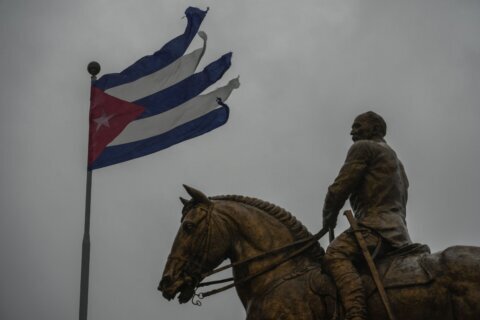The coronavirus pandemic has put countless legislative efforts on hold throughout the past year, and gun legislation in states is no exception. And while lawmakers’ attention was focused elsewhere, gun violence was on the rise in 2020, according to a new report.
“There is a sad truth here, which is that even when there’s a new crisis to deal with, like COVID, other life-threatening emergencies don’t just go away,” says Laura Cutilletta, managing director of Giffords Law Center. “In fact, they tend to amplify each other. And that’s what has happened with the COVID epidemic and the gun violence epidemic.”
Stronger gun laws in states continue to be linked to less gun violence, and 2020 is no different, according to Gifford Law Center’s annual Gun Law Scorecard, released Wednesday. But in 2020, as the coronavirus pandemic stalled many aspects of life, states passed 43 significant gun laws, according to the report, down from 70 in 2019.
[READ: These States Are Struggling the Most]
“Just like we needed government intervention to fight COVID, we need that desperately with the gun violence epidemic,” Cutiletta says. “In fact, it’s more urgent now than ever.”
The report, which grades states on their gun safety efforts and compares those efforts to gun-related death rates from the Centers for Disease Control and Prevention, found that some states were able to make gains in 2020, despite a generally stalled year. Virginia saw its grade rise from a D to a B after lawmakers revamped policies such as background checks and child access prevention laws. New Mexico also saw progress, adopting an extreme risk protection order law, allowing courts to temporarily take guns from people perceived as a threat to others or themselves. Rhode Island focused its efforts on “untraceable ghost guns,” while New Jersey’s Legislature continued to prioritize gun-related legislation, funding hospital-based violence intervention programs.
Still, only two states earned an A grade. According to the report, California and New Jersey top all 50 states when it comes to gun laws, while Connecticut, Hawaii, Illinois, Maryland, Massachusetts and New York earned A- grades. Those states tended to see the lowest rates of gun deaths, like in New Jersey, where there were 4.13 gun deaths per 100,000 people in 2020.
Toward the other end of the list, Alaska, which scored an F on the report, had 24.49 gun deaths per 100,000 people last year. In 2020, 21 states earned F grades, according to the report, with Mississippi scoring last for the strength of its gun laws. But for the first time in the report’s history, more people lived in states that had an A or A- ranking, at 98.7 million, than those who lived in states with an F rating, at 94.7 million.
But no matter the state’s grade, gun deaths disproportionately affected Black Americans in 2020, the report notes. Black Americans are 10 times more likely than white Americans to be killed with a gun, according to the CDC. Paired with the COVID-19 pandemic, which has devastated Black communities and communities of color at a disproportionate rate, a dual crisis is raging, as gun violence has spiked in these same communities most vulnerable to the virus, the report says.
The report also draws connections between policing and gun violence as an area that has seen legislative progress in the last year. This progress is important, says Kelly Drane, research director at Giffords Law Center, explaining that “when we’re thinking about reducing gun violence, we have to reduce police violence as part of that effort.”
“When there is a lack of trust between a community and the police, often in response to high profile incidents of police brutality or police violence, that can actually set off sort of a cascade that allows other kinds of violence to foster,” Drane says. “If there’s a lack of trust between a community and the police, communities may be less willing to assist law enforcement in their investigations; they may not be as comfortable calling law enforcement to intervene in violent scenarios that then can escalate and create more violence.”
According to Cutiletta, at least 14 states and the District of Columbia enacted laws addressing police reform in 2020: California, Colorado, Connecticut, Delaware, Hawaii, Iowa, Minnesota, Nevada, New Mexico, New York, Oregon, Utah, Vermont and Virginia.
But any progress in terms of gun legislation is threatened by neighboring states with weaker gun laws, note the authors of the report. Unless federal legislation is enacted, even the states with the most regulation may see slow growth.
“There’s always going to be a role for states to play,” Cutiletta says, but she notes that “we absolutely need federal action because guns can and do cross state lines so easily.”
More from U.S. News
States With the Largest Declines in Prisoner Populations
U.S. Population Growth Rate Slowed in Past Decade, Report Shows
Massachusetts Is Best State to Raise a Family, Report Shows
Coronavirus Pandemic Has Overshadowed Gun Safety Efforts, Giffords Law Center Says originally appeared on usnews.com







